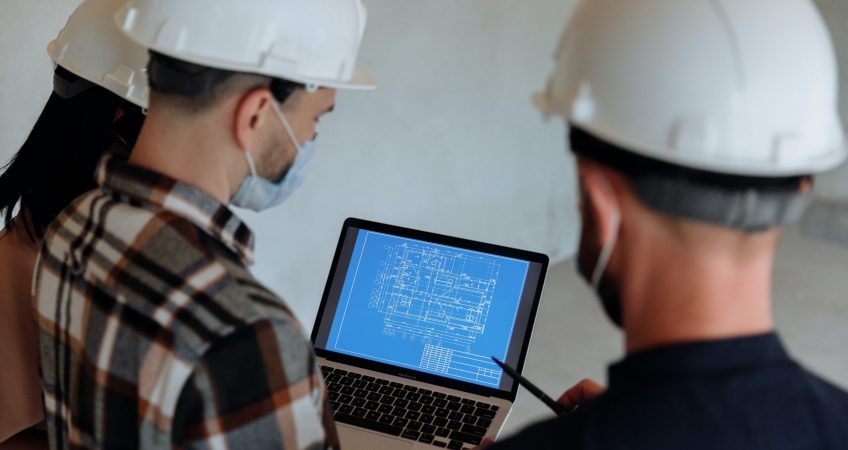London, a city renowned for its iconic skyline, is embracing a greener future through sustainable construction practices. With the construction industry being a significant contributor to global carbon emissions, eco-friendly building practices are no longer a luxury—they are a necessity. As we look towards 2025, innovative trends are emerging to redefine the urban landscape, making London a pioneer in sustainable architecture and design. This blog dives into the most impactful sustainable construction trends shaping the city’s skyline.
The Growing Importance of Sustainable Construction in London
Sustainable construction is a response to the environmental, economic, and social challenges facing urban development. London’s commitment to achieving net-zero carbon emissions by 2030 has accelerated the adoption of green construction practices. Developers, architects, and policymakers are collaborating to create buildings that prioritize energy efficiency, resource conservation, and environmental harmony.
1. Net-Zero Carbon Buildings
Net-zero carbon buildings are at the forefront of London’s sustainable construction movement. These buildings are designed to minimize carbon emissions through energy-efficient technologies and renewable energy sources. By 2025, the number of net-zero carbon projects in London is expected to surge, driven by initiatives such as the London Energy Transformation Initiative (LETI).
Key Features:
- Use of renewable energy sources like solar panels and wind turbines.
- High-performance insulation and advanced glazing techniques to reduce energy consumption.
- Smart energy management systems for real-time monitoring and optimization.
SEO Tip:
Incorporate keywords like “net-zero carbon buildings,” “energy-efficient construction,” and “low-carbon architecture” for improved search rankings.
2. Circular Economy in Construction
The circular economy model focuses on reducing waste and maximizing resource efficiency. London’s construction industry is increasingly adopting this approach to minimize environmental impact.
Practices Driving the Trend:
- Reusing and recycling construction materials.
- Designing buildings for easy disassembly and reuse.
- Implementing modular construction techniques to reduce material waste.
Example:
The repurposing of materials from demolished buildings to create new structures is gaining traction, showcasing the potential of a zero-waste construction future.
3. Green Roofs and Living Walls
Green roofs and living walls are transforming London’s urban aesthetics while promoting biodiversity and improving air quality. These features not only enhance a building’s visual appeal but also contribute to energy efficiency and thermal insulation.
Benefits:
- Reduction in urban heat island effect.
- Improved stormwater management through natural absorption.
- Creation of habitats for pollinators and other wildlife.
SEO Tip:
Use terms like “green roofs London,” “living walls benefits,” and “biodiversity in urban construction” to attract eco-conscious readers.
4. Mass Timber Construction
Mass timber, a sustainable alternative to steel and concrete, is revolutionizing construction in London. Engineered wood products like cross-laminated timber (CLT) are gaining popularity for their eco-friendliness and aesthetic appeal.
Advantages:
- Reduced carbon footprint compared to traditional materials.
- Faster construction timelines due to prefabrication.
- Enhanced structural integrity and fire resistance.
Notable Projects:
London’s Dalston Works is a prime example of mass timber construction, showcasing the material’s versatility and sustainability.
5. Smart and Energy-Efficient Technologies
Smart building technologies are integral to sustainable construction. By integrating IoT (Internet of Things) devices, sensors, and AI-driven systems, London’s buildings are becoming more energy-efficient and responsive to environmental conditions.
Applications:
- Automated lighting and HVAC systems.
- Real-time energy usage monitoring and optimization.
- Predictive maintenance to extend the lifecycle of building systems.
SEO Tip:
Focus on phrases like “smart building technology London,” “IoT in construction,” and “energy-efficient building solutions.”
6. Sustainable Urban Mobility Integration
Sustainable construction in London goes beyond buildings to include urban mobility. Developers are designing structures that support eco-friendly transportation options such as cycling, walking, and electric vehicles.
Features:
- Dedicated cycling lanes and storage facilities.
- On-site electric vehicle (EV) charging stations.
- Proximity to public transportation hubs.
Example:
The redevelopment of King’s Cross integrates pedestrian-friendly pathways and EV infrastructure, setting a benchmark for sustainable urban design.
7. Passive Design Strategies
Passive design leverages natural elements like sunlight, wind, and shade to regulate indoor temperatures and reduce energy consumption. This trend is gaining momentum in London as architects prioritize low-energy solutions.
Techniques:
- Strategic building orientation to maximize natural light.
- Use of thermal mass materials to regulate heat.
- Incorporation of shading devices to reduce overheating.
8. Health and Well-Being-Focused Design
Sustainable construction in London is increasingly prioritizing human health and well-being. Biophilic design elements, improved air quality, and access to green spaces are integral to this approach.
Benefits:
- Enhanced indoor air quality through advanced ventilation systems.
- Incorporation of natural materials to create calming environments.
- Promotion of physical activity through thoughtful building layouts.
SEO Tip:
Include keywords like “health-focused construction,” “biophilic design London,” and “sustainable wellness architecture.”
9. Regenerative Design Principles
Regenerative design goes beyond sustainability by actively restoring and improving the environment. London is seeing a rise in projects that aim to give back more than they take.
Examples:
- Buildings that generate more energy than they consume.
- Projects that restore local ecosystems and enhance biodiversity.
10. Government Incentives and Regulations
The UK government’s stringent regulations and incentives are driving the adoption of sustainable construction practices. Policies such as the Future Homes Standard and Building Regulations are setting benchmarks for energy efficiency and carbon reduction.
Impacts:
- Increased funding for green construction projects.
- Adoption of stricter sustainability certifications like BREEAM.
- Enhanced accountability through regular audits and reporting.
Conclusion: Building a Greener London
As London marches towards 2025, the construction industry is undergoing a transformative shift. From net-zero carbon buildings to regenerative design, these sustainable trends are redefining urban living. By embracing these innovations, London is not only creating a greener skyline but also setting a global example for sustainable urban development.
Whether you’re a developer, architect, or eco-conscious Londoner, staying ahead of these trends is essential for a brighter, more sustainable future.
Final SEO Tip:
Ensure your content includes long-tail keywords like “sustainable construction trends London 2025” and “eco-friendly building practices UK” to attract targeted traffic and improve search engine visibility.



